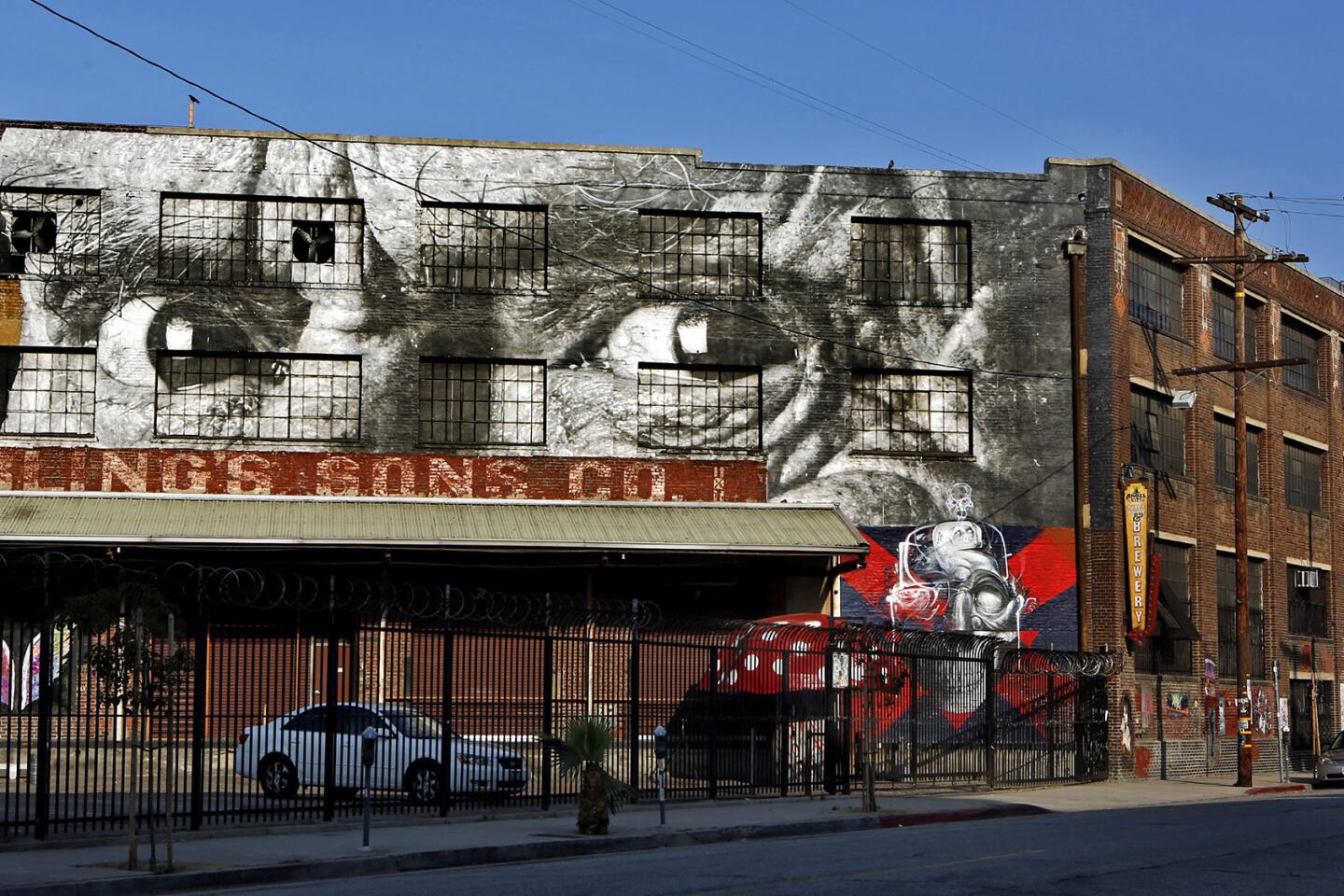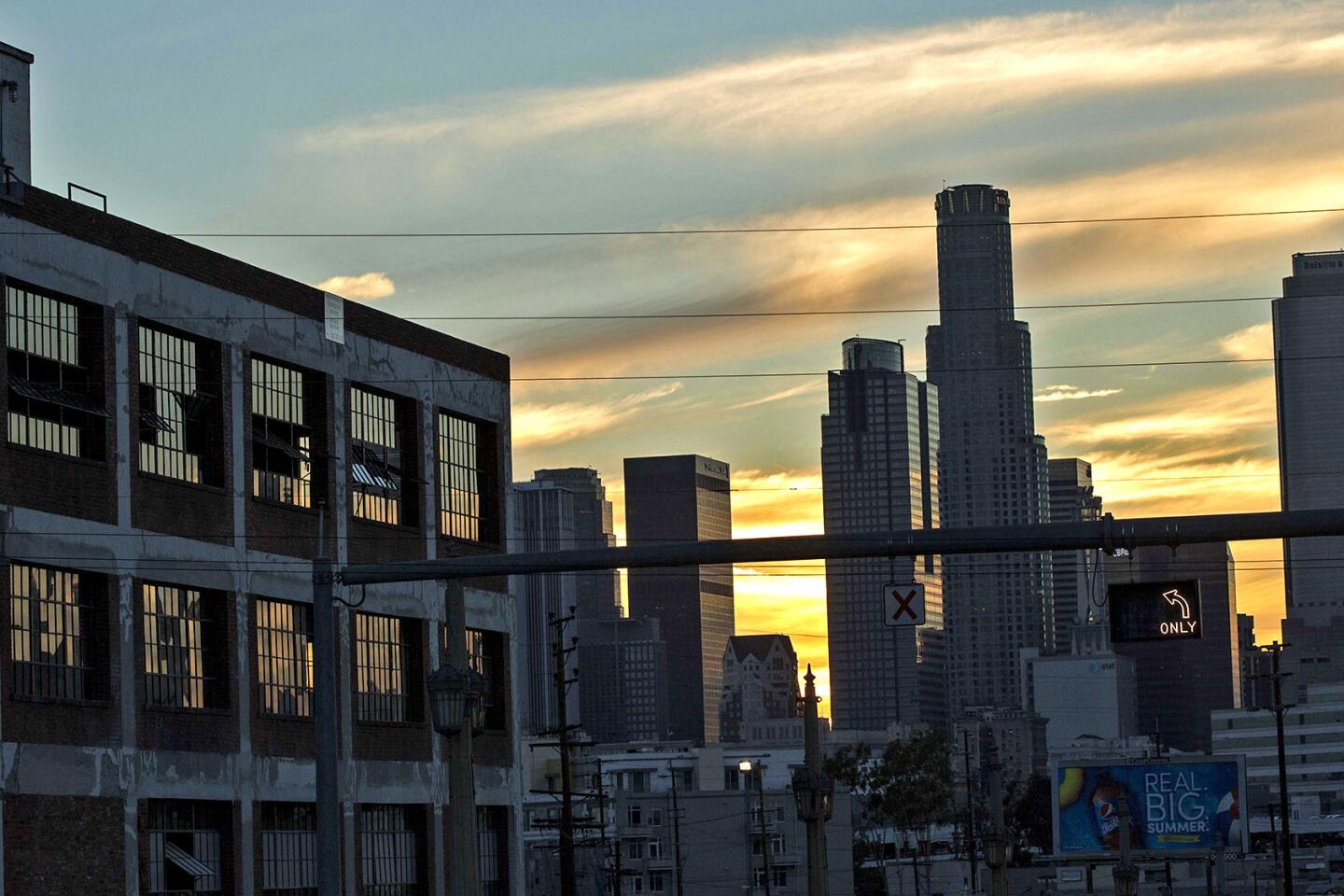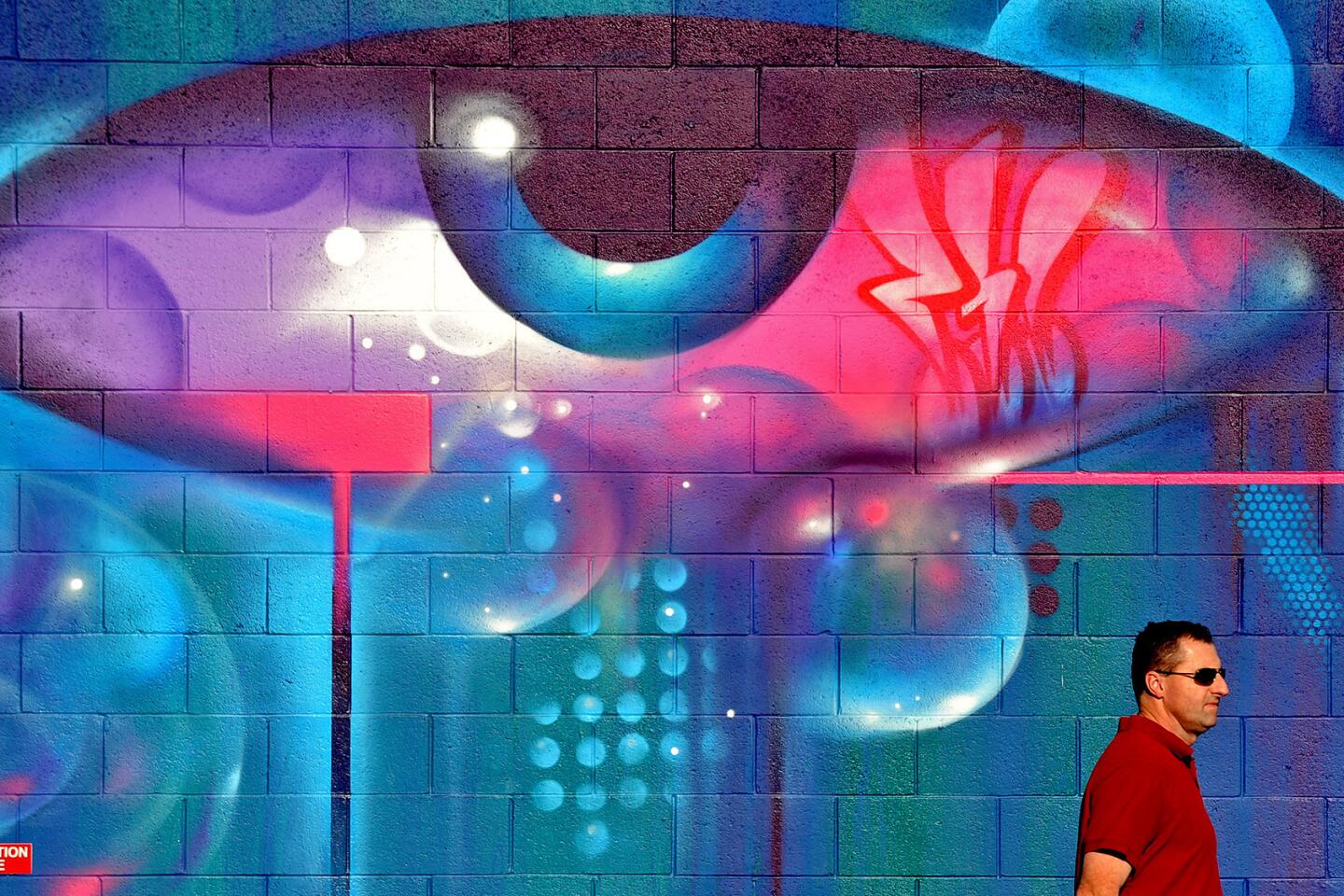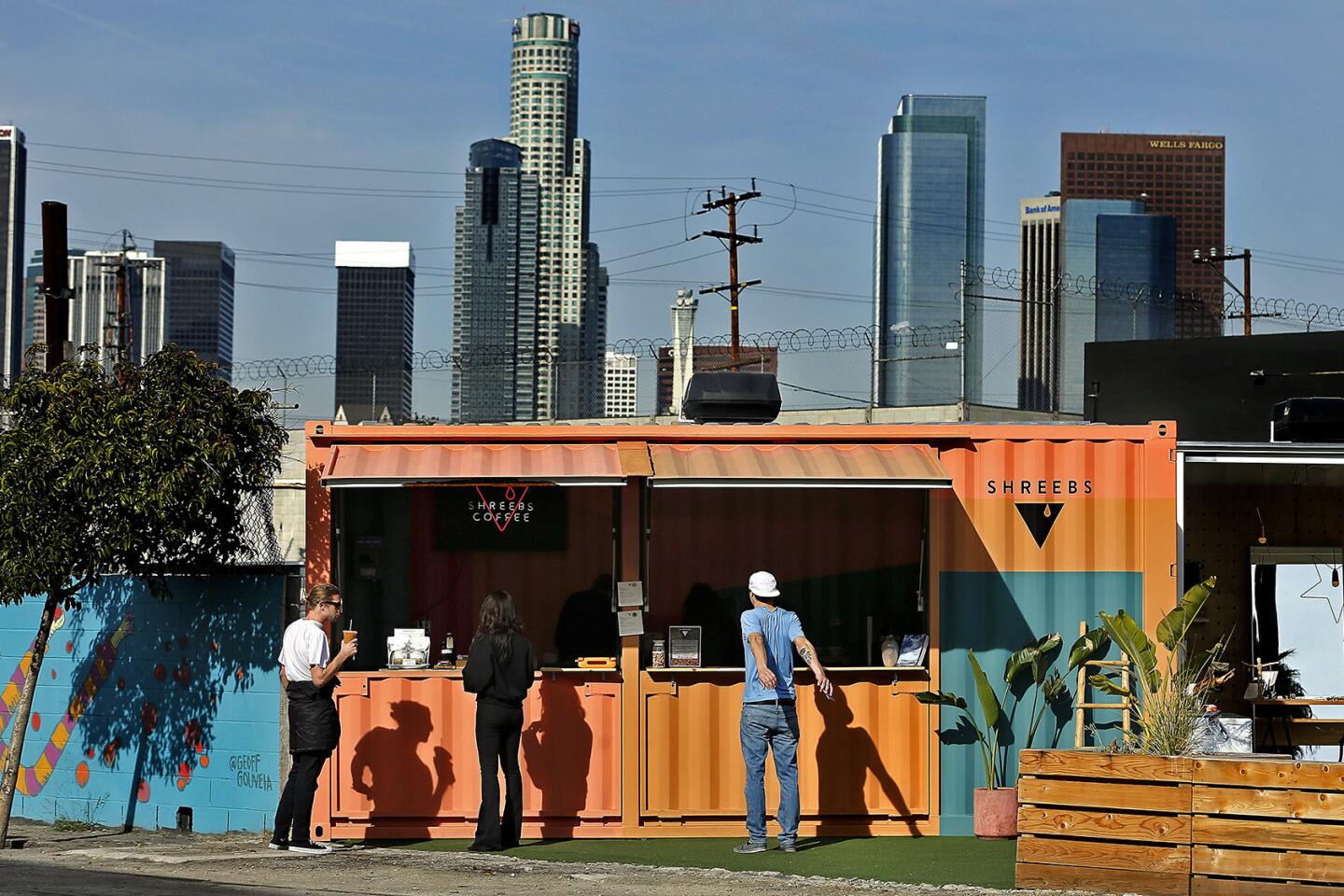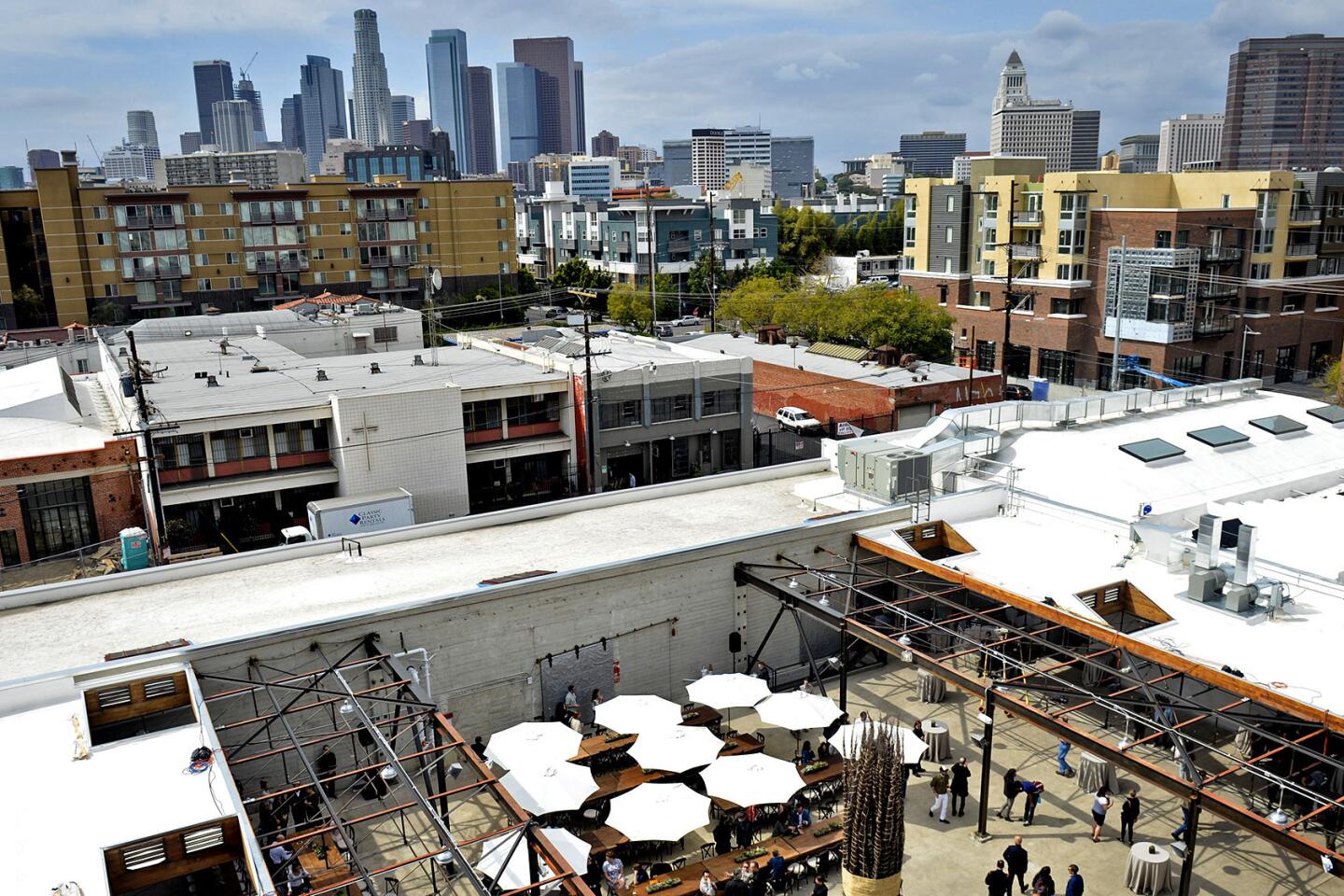Neighborhood spotlight: L.A. Arts District
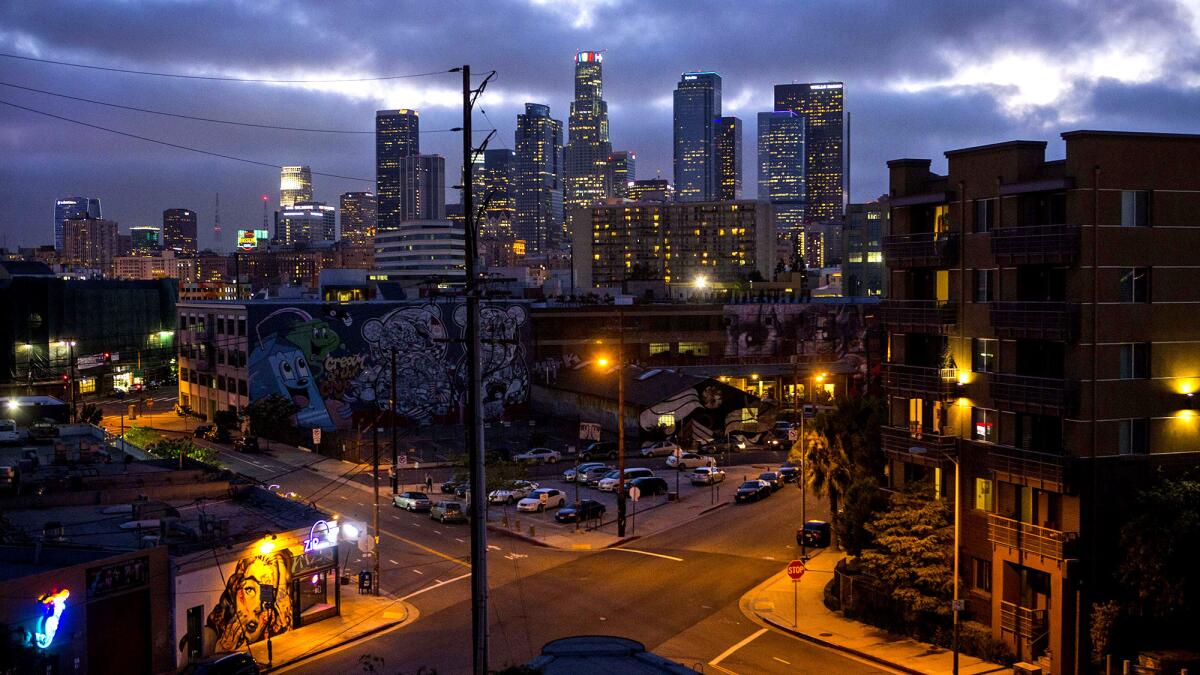
Bloom’s Square Triangle, at the intersection of Traction Avenue and East 3rd Street in downtown Los Angeles’ Arts District.
You can still, in certain haunts where old Los Angeles punks are known to gather, hear tales of the fabled late 1970s as experienced by the artists, writers and musicians who inhabited the strip of abandoned industrial land between Alameda Street and the L.A. River that became known as the Arts District.
On the one hand, the area offered squalid living conditions and a bare minimum of amenities (aside from a few decent dive bars); on the other, there was the cheap rent and the freedom it created.
While the rest of the city was in full retreat from downtown, these artists took full advantage of a moment in time when the neighborhood was empty, aside from a few forlorn freight trains that still rattled down the tracks flanked by narrow, winding streets.
Those Santa Fe Railroad trains had been trundling through the area since the late 1880s, first to export oranges from the city’s groves to the Midwest, and later to import people from the Midwest to live in the housing developments that replaced those groves.
Where Sci-Arc now stands was the Atchison, Topeka and Santa Fe line’s beautiful Moorish-style La Grande Station, just one of the many structures the massive company built in and around downtown. But Union Station meant the end of La Grande, and the rise of interstate trucking combined with the dispersion of factories to cheaper locales to the south and east left the area nearly empty.
So, 30 years before the “downtown renaissance,” artists moved in and ironically set the stage for that still-unfolding phase of rapid gentrification and development by flouting the city’s 1922 mass rezoning of downtown as a commercial and industrial district. The city modified the zoning laws to accommodate them, and eventually developers came to recognize the potential for loft conversions and expanded retail space.
Now the old punk clubs are gone, but the galleries and artists are still there, as are cafes, restaurants and high-end shops. And, with the Gold Line nearby and the ongoing construction of Metro’s Downtown Regional Connector — which will directly link the Arts District with the Westside — passenger rail has returned to the Alameda Street corridor once again.
Neighborhood highlights
Eat, drink, art: Traction Avenue and East 3rd Street are the epicenter of dining and shopping in the north end of the district. There are galleries and indie eateries aplenty, as well as outposts of Wurstkuche, Umami Burger and Pie Hole, and locals and visitors commingle at the Angel City Brewery, which has gallery space and a curated food truck experience. At the southern end of the district, the area around 6th Street and Mateo and Palmetto streets is rapidly becoming just as hot, with such mainstays as Villains now being joined by a new wave of cafes and shops.
Sci-Arc: The independent architectural school occupies the Santa Fe Railroad freight depot, which underwent a highly successful adaptive reuse renovation in 2000. This striking quarter-mile-long building provided the impetus for much of the new residential development nearby, including the massive One Santa Fe complex across the street.
History: Though little of the area’s agricultural roots remains, the warehouses and loading docks of the industrial heyday are remarkably well-preserved and give the neighborhood its distinctive feel. Buildings such as the Toy Factory and H. Biscuit lofts remain relatively unchanged as seen from the street, and narrow, curving roads trace the path of long-gone train tracks.
Expert insight
For prospective buyers looking for something unique, try buying in one of the historic buildings that have been converted to lofts, because there are only a fixed number of them, said Michael Ferguson, chief executive and founder of downtown L.A. real estate brokerage Loft Exchange.
“They are a little harder to get into at first,” he said. “But eventually, as we have seen in other parts of downtown L.A., new ground-up developments will dominate the area, making units in these older historic buildings that much rarer and more valuable.”
Neighborhood challenges
Affordability: It’s a familiar story. A cheap neighborhood becomes popular, and suddenly rents skyrocket. For artists, it can be especially difficult to afford market rents in a rapidly gentrifying area like the Arts District.
Market snapshot
In January, based on 10 sales, the median price for condominiums in the 90013 ZIP Code was $664,000, according to CoreLogic. The median price for condos in the 90012 ZIP code, based on four sales, was $551,000.
Report card
Alliance Dr. Olga Mohan High School scored 895 out of a possible 1,000 in the 2013 API ranking system. San Pedro Elementary earned an 809, Para Los Niños Middle School an 803 and the California Academy for Liberal Studies Early College High a 794. Ramon C. Cortines School of Visual and Performing Arts came in at 737.
More to Read
Sign up for Essential California
The most important California stories and recommendations in your inbox every morning.
You may occasionally receive promotional content from the Los Angeles Times.

